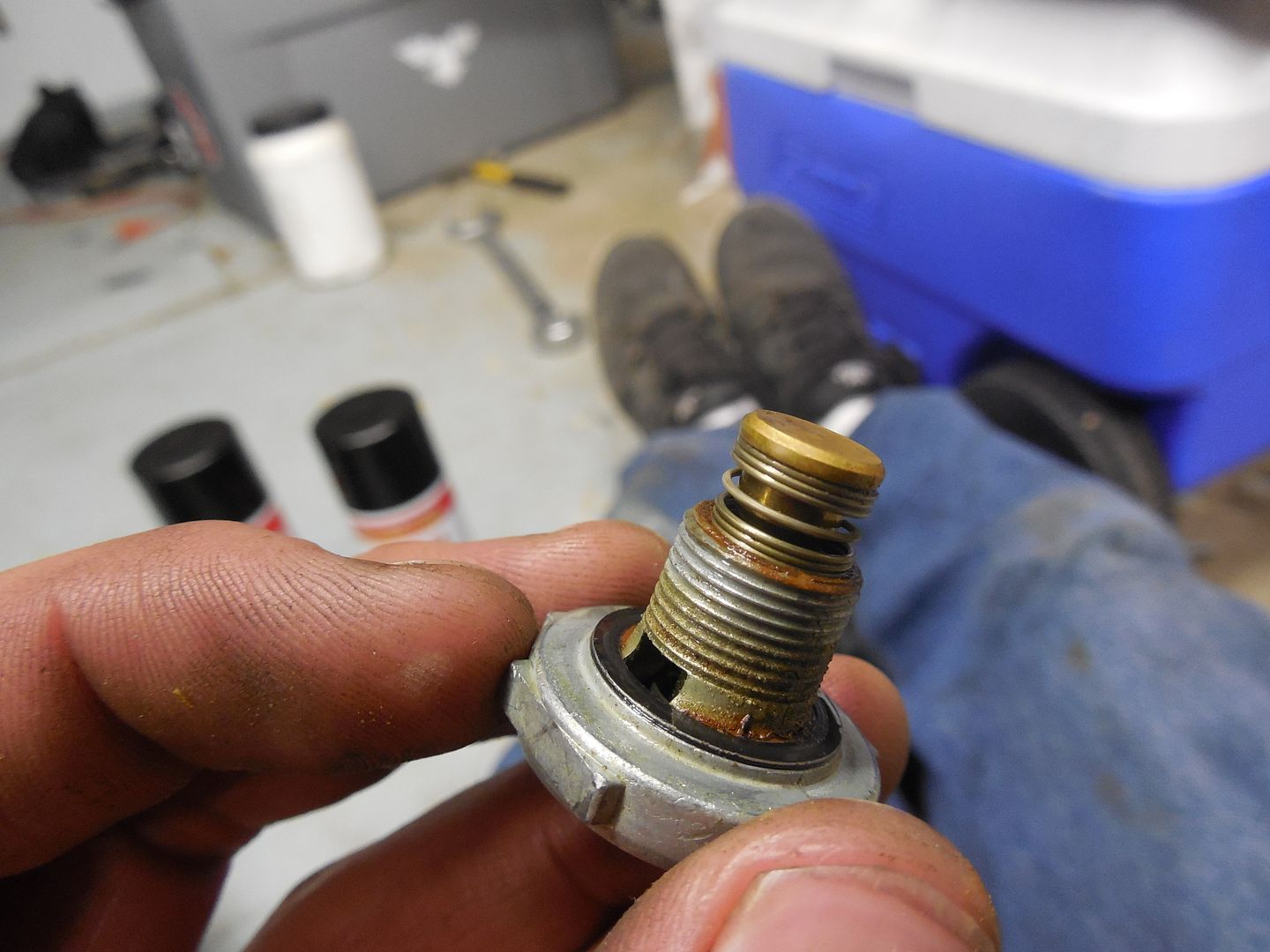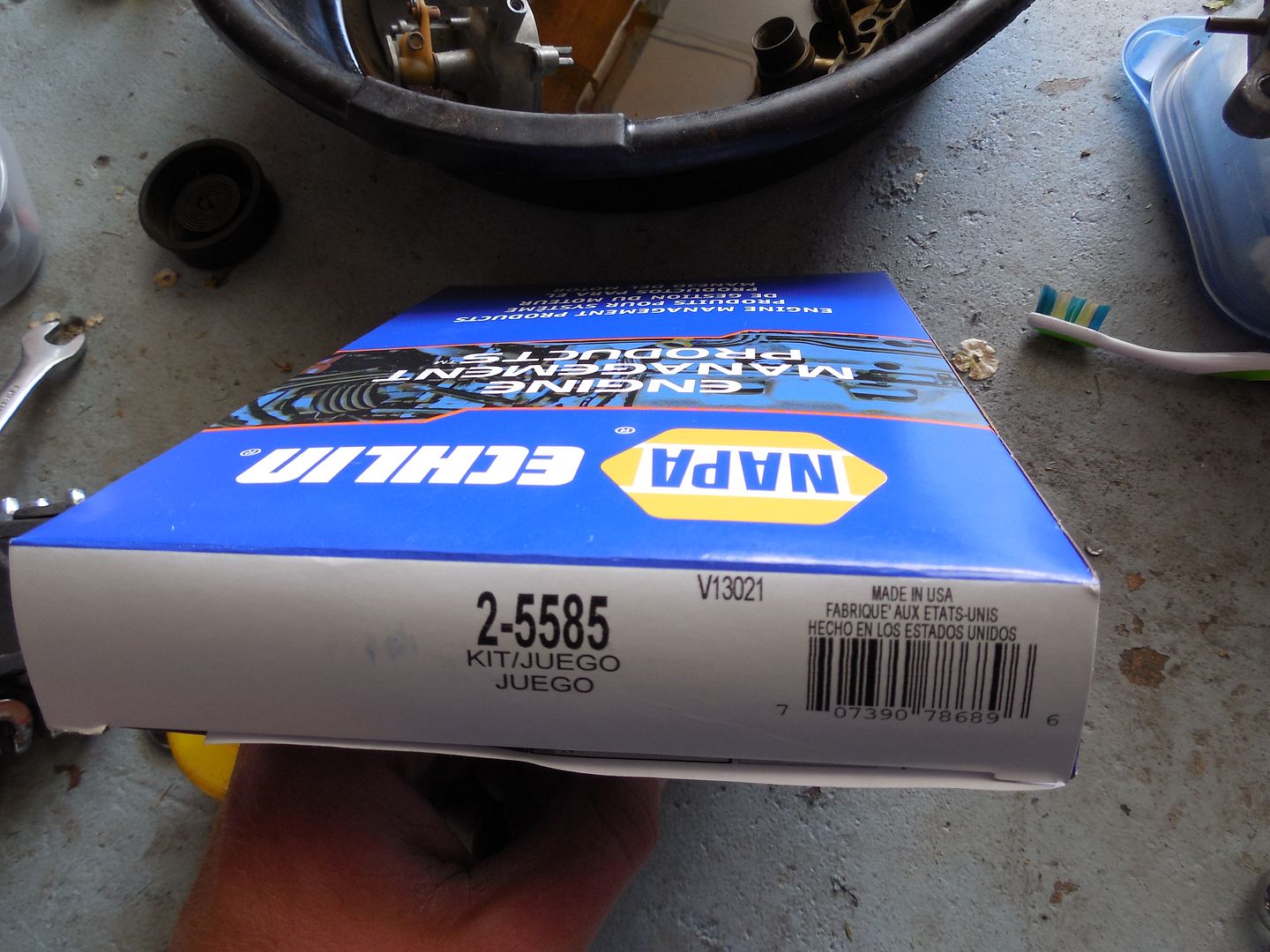The Hub
Well, it was out on the freeway for the first time in about 7 years. Shocks might as well be disconnected. Engine didn't sound superb, but not bad. Threw a wheel weight on the front driver tire. At about 55 there is a horrific natural frequency now and the tire begins to bounce.

After parking out front I noticed the leaking substance. It looked like a cross between brake fluid and oil.

I knew it would just be a matter of taking the tire off to see what had happened. The only obstacle was where to jack the car from? I'd only worked on trucks with a big ol' axle and front differential. I figured I'd go for the (correct me if I'm wrong) A arm near/below the coil.

Hmmm.... I turn the rim around and I see a big ring of grease. Maybe this was the mystery fluid?

Looking at the Drum I don't see anything off hand that has cause for alarm. The dust cover has seen better days though. Just a quick pop with the screw driver and it came right off.
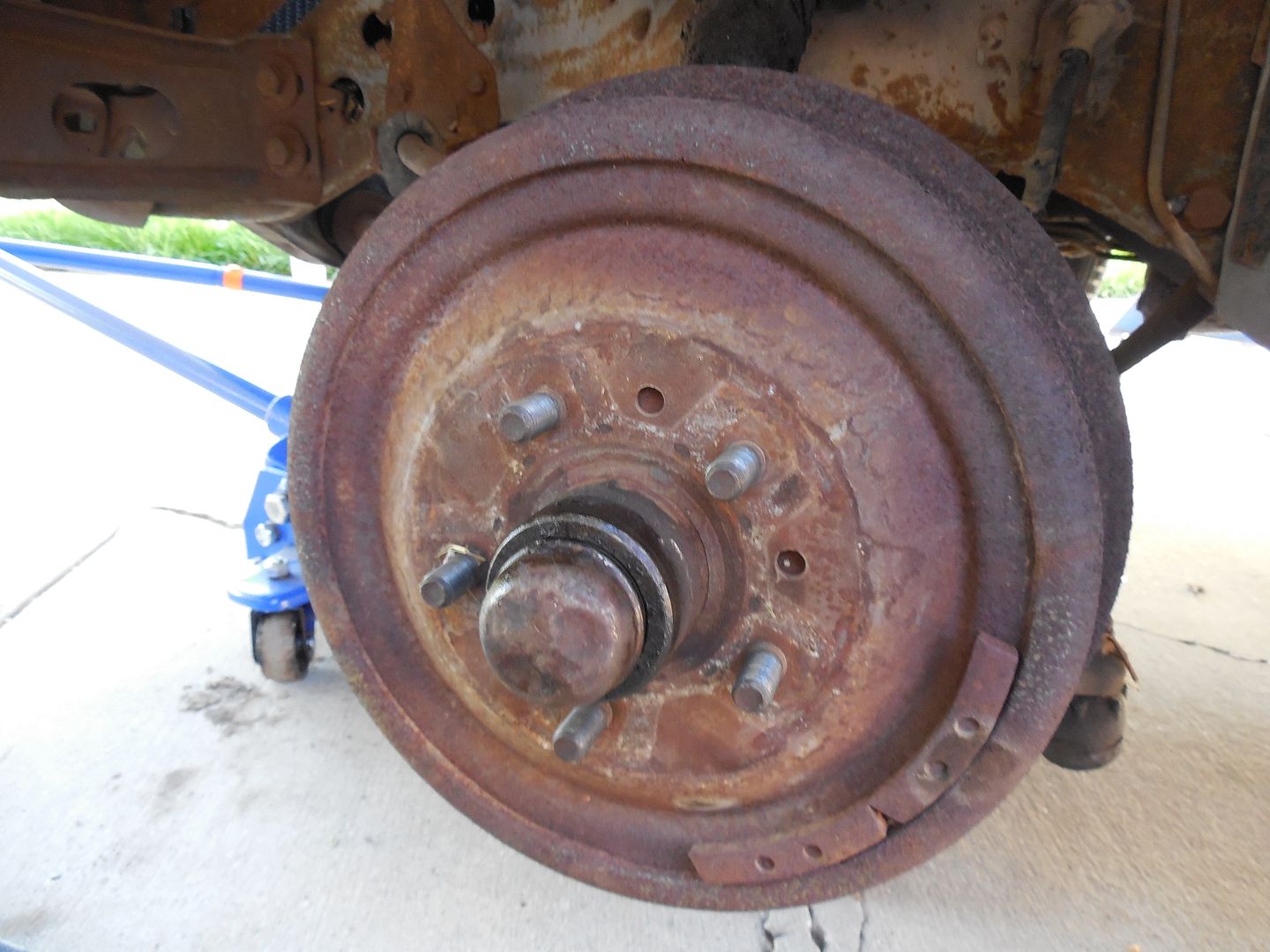
Now I get a chance to finally see what the hub looks like on these things. It consists of a cotterpin with a castle nut cover, a nut, a flat washer, and an outter wheel bearing all riding on the spindle.

First step was to remove the cotter pin and castle nut cover.

Now we are just left with the nut and a flat washer behind it retaining the wheel bearing. Just grab a 1 1/16" and pop her off (these shouldn't be very tight).

Ah, now you are just left with a washer. Notice there is a channel in the spindle that a flange on the washer sits in to keep from rotating against the nut.

I was having a bit of trouble figuring out how to pop off the drum on my 68'. I had PB blastered some of the bolts holding the Entire assembly on thinking this was the way to do it.

Someone should have yelled, "STOP!". These bolts hold everything on to your steering knuckle (or the equivalent?). I finally notice a little window at the base of the inner drum.

Eurika! The way to back the brakes off! With a screw driver I was able to spin the gear one way with a clicking sound each time I spun it one tooth farther and farther. Little did I know there was a spring loaded latch hiding in the shadows behind the gear. After a good whiles I finally figured out how to get it to release the gear allowing it to spin the other way.

I found using a second screwdriver to push the spring loaded latch away from the gear and window would do the trick.
I finally got a look at the breaks and pulled the outer drum off.

Well, to me everything looks ok, if not better than the rest of the vehicle. So I decided to clean up the bearings and repack them. I imagine the grease (if any) is probably about bad which may explain why it separated and oozed onto my rim.


I inspected them closely for any signs of wear or stress. They looked alright to me so I just super cleaned them in break cleaner and repacked them.
Now here is a shot of the inner bearing after I had gotten everything put back together.
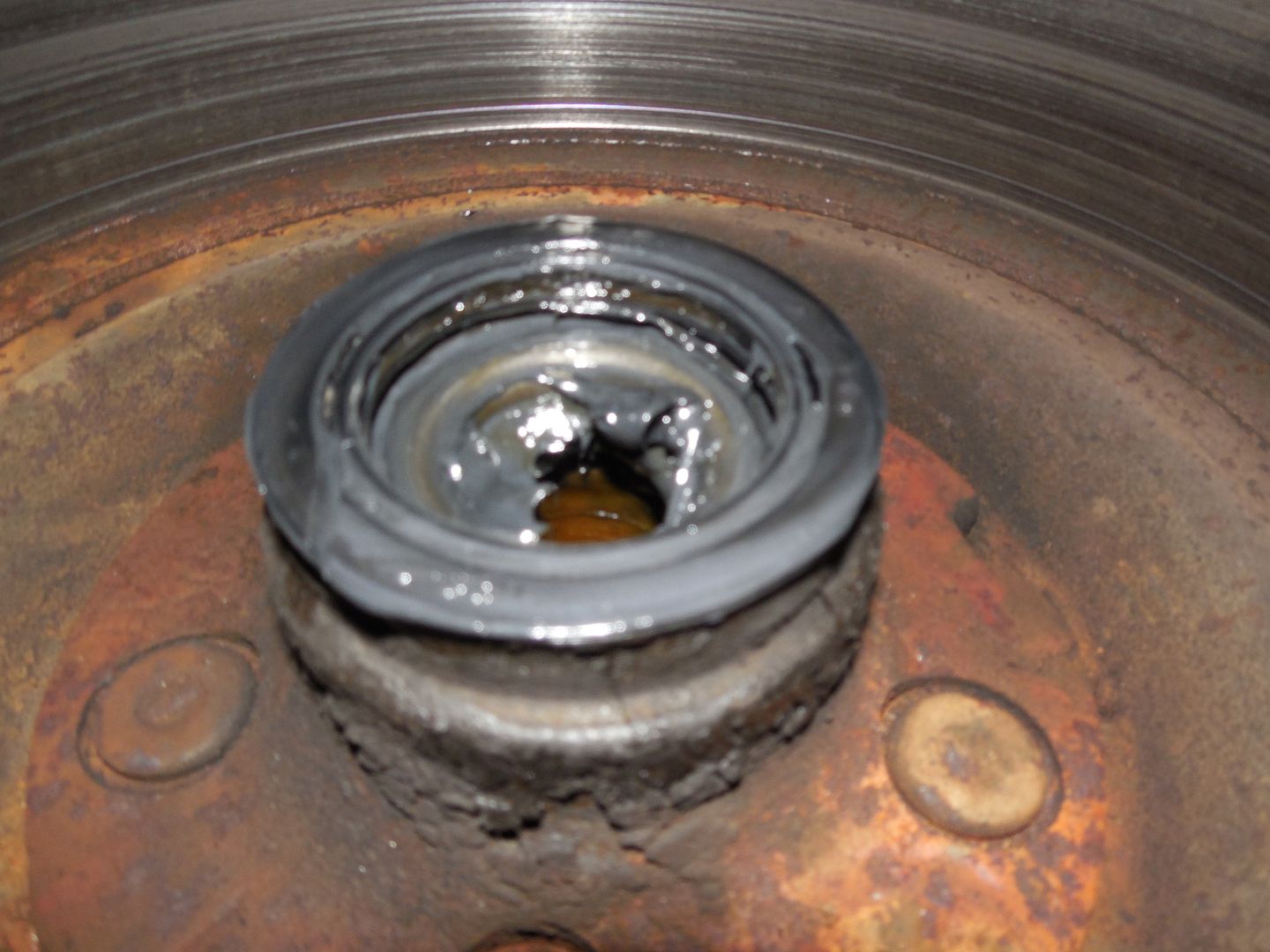
Now, I couldn't track down a new bearing seal anywhere! I know it is a big no-no to reuse seals, but it was super snug to start with and did not have any form of damage on it. After undoing what I did in the above I put the tires back on and lowered it to the ground.

Seems a good bearing repacking solved the issue.



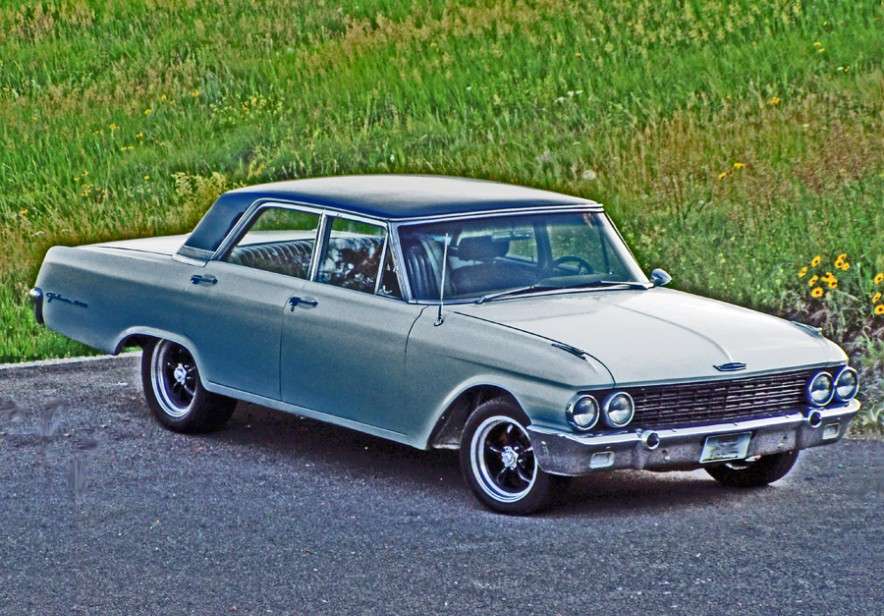
 Suicide68 wrote:
Suicide68 wrote:








